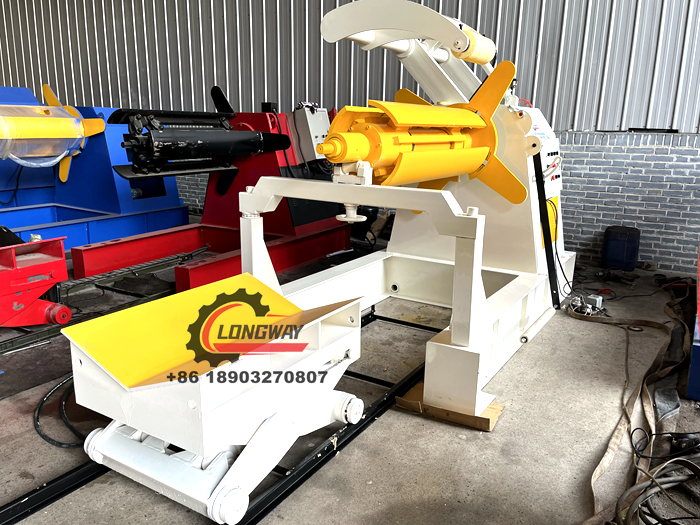Advanced Dual-Layer Roll Forming Machine for Efficient Metal Profile Production
Double Layer Roll Forming Machine A Comprehensive Overview
In the realm of modern manufacturing, the double layer roll forming machine has emerged as a revolutionary technology, streamlining the production of metal sheets with dual profiles in a single pass. This innovative machine caters to the increasing demand for efficiency and versatility in the construction and manufacturing industries.
What is a Double Layer Roll Forming Machine?
A double layer roll forming machine is designed to produce two different profiles of metal sheets simultaneously. The machine consists of a series of rollers, which shape the flat metal strip into specific profiles as it passes through the system. Unlike conventional roll forming machines that create a single profile, the double layer variant allows manufacturers to diversify their output without the need for additional machinery or extensive setup changes.
The primary configuration typically includes two different sets of rollers, each dedicated to forming distinct profiles. These profiles can range from roofing sheets to wall panels, thus making the machine suitable for a wide array of applications. The ability to produce two layer profiles reduces production time, optimizes material usage, and ultimately increases profitability.
Key Features and Benefits
1. Efficiency One of the significant advantages of the double layer roll forming machine is its operational efficiency. Manufacturers can produce multiple products in a fraction of the time it would take using separate machines. This dual production capacity translates to significant time and cost savings in large-scale manufacturing.
2. Space-Saving Design In industries where space is a premium, the compact design of the double layer roll forming machine allows for an optimized production line. By integrating the capability to produce two profiles in a single unit, businesses can save valuable floor space in their manufacturing facilities.
double layer roll forming machine

3. Reduced Labor Costs With the ability to operate multiple functions through a single machine, labor requirements are minimized. Fewer operators are needed to manage the production process, leading to additional savings on labor costs.
4. Customization The versatility of double layer roll forming machines makes them ideal for custom projects. Manufacturers can easily switch between different profiles, allowing for greater flexibility in responding to market demands or client specifications.
5. Durability These machines are engineered to be robust and long-lasting. High-quality materials utilized in their construction ensure that they can withstand the rigors of continuous operation, making them a worthwhile investment for manufacturers.
Applications
The applications of double layer roll forming machines are diverse and widespread. They are extensively used in the construction industry for producing roofing sheets, wall panels, and other structural components. Additionally, they find use in manufacturing decorative architectural elements and industrial products, thereby catering to various sectors.
Moreover, these machines play a crucial role in the production of metal parts for the automotive and aerospace industries, where precision and efficiency are paramount. Their ability to produce complex profiles efficiently makes them invaluable in the fast-paced manufacturing environment.
Conclusion
The advent of the double layer roll forming machine signifies a major leap in manufacturing technology. By combining efficiency, versatility, and cost-effectiveness, it addresses the modern demands of various industries adeptly. As more manufacturers recognize the advantages of this innovative technology, they are likely to enhance their production capabilities and meet the ever-growing market demands more effectively. In a world where speed, quality, and efficiency are essential, the double layer roll forming machine stands as a testament to the future of manufacturing.
-
Roof Panel Machines: Buying Guide, Types, and PricingNewsJul.04, 2025
-
Purlin Machines: Types, Features, and Pricing GuideNewsJul.04, 2025
-
Metal Embossing Machines: Types, Applications, and Buying GuideNewsJul.04, 2025
-
Gutter Machines: Features, Types, and Cost BreakdownNewsJul.04, 2025
-
Cut to Length Line: Overview, Equipment, and Buying GuideNewsJul.04, 2025
-
Auto Stacker: Features, Applications, and Cost BreakdownNewsJul.04, 2025
-
Top Drywall Profile Machine Models for SaleNewsJun.05, 2025








